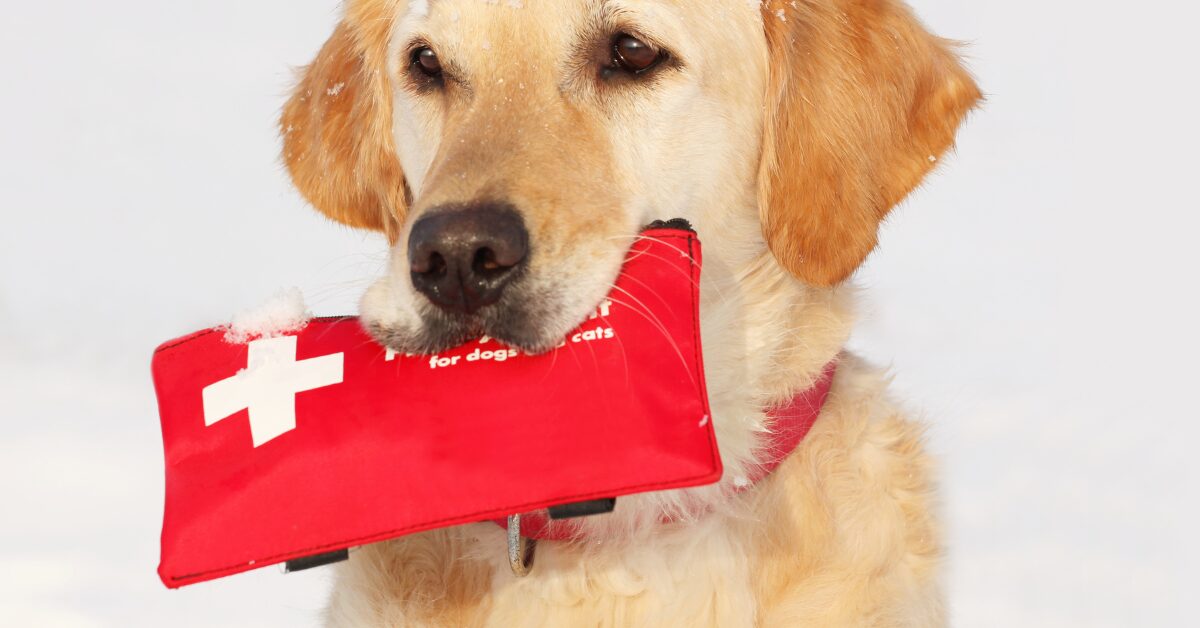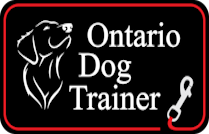Are You Actually Ready for an Emergency?
If you follow me on Instagram, you already know — we lost power for nearly a full week thanks to the last ice storm here in Ontario. No lights, no heat, and a dog looking at me like this is fine, right? And listen, we were relatively lucky — we’ve got a generator that kicks in automatically. But it really drove the point home:
Emergency preparedness isn’t a luxury. It’s a necessity – especially when you’ve got pets relying on you.
So let me ask you bluntly:
If disaster hit right now — I mean the power goes out, roads are blocked, or you have 10 minutes to grab your stuff and go — do you have an emergency plan for your pets?
Not a vague mental checklist. Not “I know where the food is.”
I mean an actual, written, ready-to-use emergency preparedness kit for your household — one that includes your dog.
If your answer is “not exactly,” welcome to the club. Most of us mean to be prepared. We assume that big emergencies happen somewhere else — not in our quiet corner of the world. But extreme weather events are on the rise, and thinking “it won’t happen here” just isn’t good enough anymore.
In this blog, I’m going to walk you through what emergency preparedness looks like specifically for pet owners in Ontario – but the principles and much of the equipment apply to any location with weather extremes (which is just about anywhere). We’ll cover:
- What to have in your emergency kit (human and pet-related)
- Local Ontario hotlines and resources – using Ontario as the base location
- First aid and shelter-in-place essentials
- What to do if you need to evacuate with your dog
- And yes — even what kind of food and water to pack
I’ll also give you a fridge-worthy checklist you can print and actually use when things go sideways. Because when you’re stressed, confused, or panicked is not the time to be Googling “do I pack dog shampoo in a wildfire.”
Why Emergency Preparedness Matters More Than Ever
Ontario Isn’t Immune
Let’s be honest — Ontario sees its share of floods, windstorms, snow events, and blackouts. You don’t have to live in a major floodplain or tornado alley to be at risk. Power outages, chemical spills, road closures, or even a sudden evacuation order can catch any of us off guard.
It’s Not Just About You — Your Dog Relies on You
Your dog can’t pack a go-bag. Your dog doesn’t know where the emergency exits are. Emergency preparedness for pet owners is about being proactive so your dog isn’t left behind or put in unnecessary danger. It’s not dramatic. It’s just smart.
The Must-Have Ontario Emergency Preparedness Kit
First — The Basics for Humans
Let’s knock out the obvious first. Every household should have:
- Flashlights and batteries
- Manual can opener
- First aid kit
- Non-perishable food for 72 hours
- Bottled water (at least 2 litres per person per day)
- Emergency cash
- Charging blocks for phones
- Personal documents in a waterproof pouch
- Blankets and extra clothing
- Whistle, duct tape, plastic sheeting (yes, really)

Now — Your Pet Emergency Kit
Here’s where we level up. Your emergency preparedness kit for your pet should include:
Food and Water
- 3 to 5 days’ supply of dry food or shelf-stable raw food like Smack
- Collapsible water bowl and bottles of clean water
- Avoid raw frozen food in emergencies (unless you’ve got a generator and fridge access)
Identification
- Collar with ID tags
- Microchip info and vet records printed out
- A current photo of your pet (in case you’re separated)
Medications and First Aid
- Any prescription meds in waterproof containers
- Tick/flea meds
- Canine first aid kit: gauze, tweezers, antiseptic wipes, vet wrap
Comfort and Containment
- Crate or travel kennel
- Leash, harness, muzzle if needed
- Blanket or toy that smells like home
What If You Have to Evacuate With Your Dog?
You Need a Plan — Not a Panic
Most people don’t realize how quickly evacuation decisions are made. You may have minutes to grab your things. If your dog isn’t crate-trained or your supplies aren’t packed, you’re wasting precious time.
What to Do
- Pre-pack a “go bag” for your pet and keep it where you’ll remember it.
- Keep leashes and crates easily accessible
- Make sure your dog is microchipped and registered
- Know which motels, shelters, or friends will accept dogs in advance
- Practice loading your pet into the car with supplies, so it’s not chaos when it matters
Sheltering in Place with Pets
Not all emergencies mean hitting the road. Sometimes, the safest place is your home — if you’re prepared.
- Keep extra jugs of water on hand
- Make sure you can safely heat your home or stay cool without power
- Rotate your pet food stock every few months
- Have sanitation solutions if water is unavailable (think: puppy pads, waste bags, bleach wipes)
Emergency Preparedness in Ontario: Local Contacts You Should Know
These aren’t just numbers to skim. Store them. Print them. Save them in your phone.
Emergency Services
- 9-1-1 – Police, fire, or medical emergencies
Municipal & Health Services
- 311 – Non-emergency municipal info (road closures, shelters)
- 211 Ontario – Community resources and services (Dial 211 or visit 211ontario.ca)
- Telehealth Ontario – 1-866-797-0000 (Free 24/7 health advice)
- Ontario Poison Centre – 1-800-268-9017
Government & Preparedness Agencies
- Emergency Management Ontario (EMO)
Email: askEMO@ontario.ca
Phone: 1-866-517-0571
Website: Emergency Management Ontario - Public Health Ontario: Emergency Preparedness
Website: publichealthontario.ca
P.S. Not from Ontario? Then don’t wait.
Look up your local emergency contacts right NOW — not “someday.” That includes municipal hotlines, vet clinics, poison control, and emergency shelters in your area. Print them. Save them in your phone. Tape them to the inside of your pantry if you must.
Because the middle of a crisis is not the time to be wondering whether 211 works where you live.
Thoughts From a Dog Trainer Who’s Seen It All
Look — I get it. Emergency preparedness isn’t sexy. It’s not fun. It’s the broccoli of pet ownership. But when stuff hits the fan — and one day, it will — you’ll be glad you took 20 minutes to set your household up to succeed.
Because your dog is counting on you.
And when things go sideways, you won’t be flailing. You’ll be ready.
🔗 References & Helpful Links
For further reading and access to official emergency preparedness resources in Ontario, check out the following:
- City of Toronto – Who to Call in an Emergency
https://www.toronto.ca/community-people/public-safety-alerts/who-to-call-in-an-emergency - 211 Ontario – Community Programs and Services
https://211ontario.ca/about/211-during-emergencies - Emergency Management Ontario (EMO)
https://www.ontario.ca/page/emergency-management-ontario - Southeast Healthline – Emergency Management Ontario Services
https://www.southeasthealthline.ca/displayservice.aspx?id=103540 - Publications Ontario – Emergency Preparedness Guides
https://www.publications.gov.on.ca/browse-catalogues/emergency-management-ontario - Get Prepared Canada – Emergency Preparedness Week (May 4–10, 2025)
https://www.getprepared.gc.ca/epweek - Public Health Ontario – Emergency Preparedness Information
https://www.publichealthontario.ca/en/Health-Topics/Emergency-Preparedness
Enjoyed this read? For more no-nonsense insights on dog training and behavior, check out my earlier blogs:
- Tick-Borne Diseases in Dogs: What Every Dog Owner Needs to Know
- Teaching Your Reactive Dog to Stay Calm: The Art of Doing Nothing
- How to Approach a Dog Without Causing Chaos
There’s always something new to learn, even if it’s just a different perspective on the everyday challenges we face. Happy reading!
Join my Email List to get frequent updates, free downloadables, and dog training tips! Click here to subscribe.
Get the latest updates when we publish new freebies and guides by signing up. Your dog will thank you, and you’ll be the first to know when new gifts are available!
Let’s stay connected:

